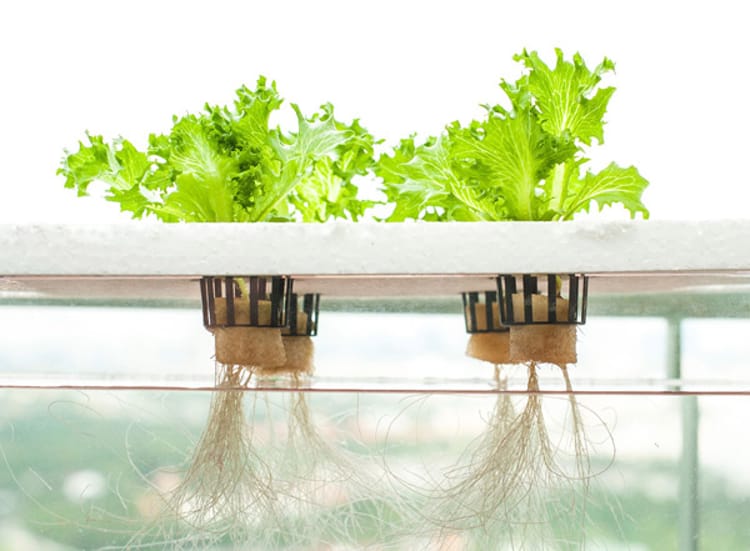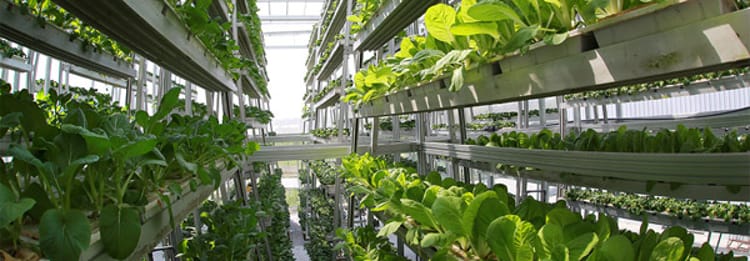Food of the future: How we are changing what we eat
A rapidly growing world population and diminishing resources are forcing dramatic change in the way we produce food and the way we eat.
Finding new ways to farm, and new types of nutrition are paramount – and in the future we will not be eating what we eat now – at least not in the volume or the way that we currently do so.
The reasons for change
The land: Farming takes up space. And available arable land is shrinking due to the growth in human need for housing and infrastructure.
The cost: Farming input costs continue to rise. These costs are set to double in the next five to seven years, possibly putting meat into the luxury food class.
The environment: Deforestation, climate change, soil erosion, factory farming, including unsavory additives such as hormones to speed up growth and antibiotics (because large animals kept in small spaces increase the risk of disease), animal welfare, growing aversion to the volume of slaughter – have all worked to create a more reluctant and concerned market. Vegetarians and vegans are a growing movement worldwide, while organic and sustainable farming are becoming more popular but expensive trends.

New foods on the menu
There are many innovative ways to grow more food with less: less space, less water, less impact on the environment. Vertical farming, hydroponics, and greenhouses are muscling in on conventional methods. But despite all attempts to produce traditional food in new ways, the reality remains that unless we can contain population growth, we are going to have to consider entirely new foods, and new ways of consuming our foods.
Mini-livestock: This is the polite new term for farming insects. Getting past the squeamish aspect, insects provide as much nutritional value as ordinary meat. They are a good source of protein. Operational costs are lower, it takes up less space, and consumes less water. There are an estimated 1 400 species edible to man. And a large number are already part of the diet in many areas. Insects will be ground down and used as a vital ingredient in non-meat products such as burgers and sausages.
Cultured not slaughtered: Experiments in in-vitro meat are growing apace. Stem cells from cows have been used to create sausages and burgers. Flavours have been improved. It is now becoming more commonplace, and viewed as a more environmentally-friendly and efficient way of providing meat dishes.
Vegan cheese: Contains protein identical to milk protein but doesn’t come from animals. Yeast cells are transformed into miniature milk–protein factories. In addition, the process is more environmentally sustainable than standard cheese–making. It retains the taste and nutritional value of real milk. It could be accessible to many people worldwide and less expensive than dairy milk.
Seaweed: Worldwide there are 145 species of red, brown or green seaweed that are used as food. In addition, there are 10,000 different types of seaweed in the world, all worth exploring as excellent food sources. The benefits include: it takes up no land, can be grown in the ocean without using fresh water, can replace the use of salt granules which are bad for blood pressure, and is fast-growing. It has long been a staple food in Asia and countries including Japan have huge farms. It’s a sustainable resource that much of the world has not yet tapped into.
Genetic modification: Creating food that lasts longer or entirely new types of crops is already underway. Developing vegetables to grow using seawater is another area of success and already seawater potatoes, tomatoes and carrots are available.
Nutrigenomics: Mapping the human genome has given us a tool to ascribe the food of the future – in other words, food that will be customised to give us the most benefit on an individual basis. It’s a cross-match of genetics and nutrition. Our genome reveals valuable information with regard to our specific needs, which once understood should assist us to lead a healthier life. Once you’ve had your DNA sequenced, a smart app could let you know which food you should eat and what you should avoid. Thus personalising our diets like thumbprints.

“When parents make their children’s school lunches in the morning, they’ll use a nutritional database to help them figure out what’s best for each child, factoring in everything from getting enough vitamins to dealing with digestive system issues.” ~ Prof. Yoram Kapulnik.
Making the changes to prepare for change
At Netafim, while our focus is on alleviating water shortage through technological innovation, we are aware of the changing needs of farming. However we grow our food – or change its composition – we will always need that increasing scarcity called water. Using less of it to create more to eat is our vision of the future. Drip irrigation is designed to suit every kind of crop and the circumstances in which it is grown. And while biotechnology searches for the ultimate in drought-resistant crops, we seek to create the ultimate in drought-resistant technology. The food of the future is almost with us, and fine-tuned farming technology is already driving that future.


Share your thoughts
Comments
We'd love to hear your thoughts! To enter a comment, type your name and email address.